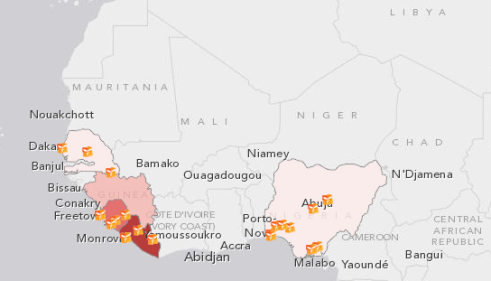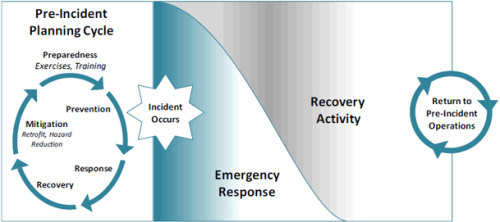
It is scary as hell. The 2014 Ebola outbreak is the largest Ebola outbreak in history and the first in West Africa, with cases being reported in Senegal, Nigeria, Liberia and Guinea. Ebola is an infectious and often fatal disease that results in fever and severe internal bleeding. Previous outbreaks were relatively contained, and the lethality of the disease served to kill its host before it could spread far.
The first noted and attributed outbreak in 1976, in Zaire, killed 88% of the 318 reported cases. Nasty.
There are no medications effective in curing the virus, but this strain appears to be a little less lethal, which paradoxically is not a good thing. Reduced lethality allows it to spread further, and with airline travel it can be a world away before people know they are infected.
The initial response in America was passive-aggressive: activating the Emergency Response Center in Atlanta at the Center for Disease Control (CDC) and deploying medical teams to the affected areas to help coordinate technical assistance and control activities with partners. Three medical missionaries who contracted the disease were brought back to the US for treatment, and in a hopeful note, all three have survived.
Because of the lack of existing medications to combat Ebola, the Department of Health and Human Services (HHS) has contracted with Mapp Biopharmaceutical Inc. to develop and manufacture an experimental drug called “ZMapp,” for early stage clinical safety studies and nonclinical studies. Initial human testing has already begun.
Drug development is a notoriously time-consuming process, and unlike previous Ebola outbreaks, this one continues to spread. As you saw yesterday, the President is besieged by problems overseas. There are the murderous jihadis, in Syria and Iraq, of course, as well as Boko Haram in the areas where the outbreak is centered.
You remember the Boko’s right? They were the religious zealots who think it is appropriate to kidnap hundreds of Christian girls, sell them into slavery, deliver them into forced marriages. They don’t like us, either.
Based on a need to respond to the growing health crisis, President Barack Obama is ordering 3,000 military personnel to West Africa. There they will confront an inadequate public health infrastructure, disordered societies, and m amid worries that the financial and human cost of the outbreak is rapidly growing.
The military response is part of a heightened U.S. role that will include erecting new treatment and isolation facilities, training health care workers and increasing communications and transportation support capabilities to mitigate the spread of the disease.
“Here’s the hard truth,” announced the President. “In West Africa, Ebola is now an epidemic, the likes that we have not seen before. It’s spiraling out of control, it’s getting worse.”
With US forces in the field, there is clearly the danger to personnel from the disease. Add to the fact that there are ongoing insurgencies with some seriously infectious jihadis in the neighborhood, we have the clear requirement for Force Protection intelligence capabilities as well.
I am working on a scheme to do exactly that, laying out the way our public health response system works (and doesn’t) and how we can best support our military as they deploy to the areas where the outbreak is the worst.
It is sort of dry going, considering the stark reality of what we are asked our people to confront. The words go sort of like this:
“Response to Public Health emergencies is provided by a sector-based approach shared between the Department of Health and Human Services and its components (Center for Disease Control (CDC) National Institutes of Health, et al), State, local, tribal, and territorial levels of government.
This generally corresponds to the scales on which emergencies generally occur. On the one hand, the complex and dispersed nature of the sector makes it difficult to disable the entire nationwide system. On the other hand, this presents challenges in coordinating emergency responses across disciplines, regions, and levels of government.”
It is painful to even write that stuff. I spent too many years crafting words to go along with diagrams like this:

Here is the problem, or at least one of them. We are way past the “Pre-incident Planning Cycle” phase, and well past when the incident has occurred. It is going to be catch-up, and the “recovery activity” can’t even be seen yet.
Off we go again. If there was ever a case for American exceptionalism, this is it.
More on what we ought to be doing tomorrow. Today is calling.
Copyright 2014 Vic Socotra
www.vicsocotra.com
Twitter: @jayare303
